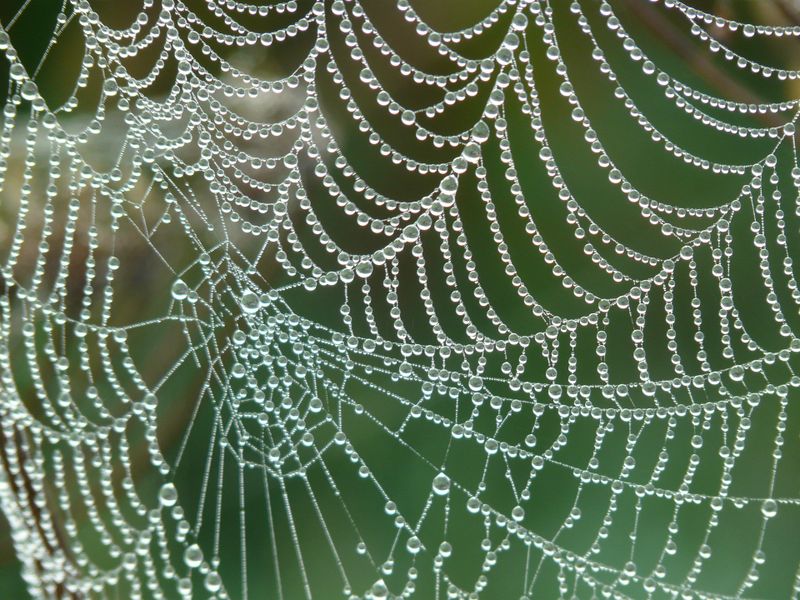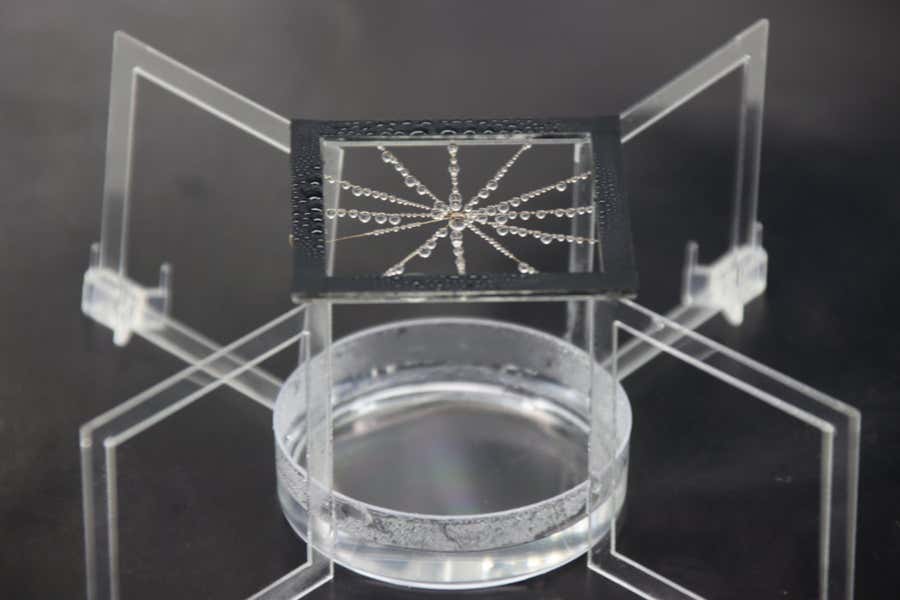Once again it is biomimicry, the art of taking inspiration from nature to solve human problems, that brings us a revolutionary discovery. In a world where drinking water is increasingly a precious commodity, science has asked for help... from cobwebs (and this time not to make music).
These intricate natural designs, capable of capturing the morning dew, inspired a team of visionary researchers. The result? An artificial spider web that could transform atmospheric humidity into an inexhaustible source of drinking water.
Inspiration from nature
Nature has always had ingenious solutions to problems that humanity is only beginning to understand. Let's take, as mentioned, simple cobwebs. Many of us see them as natural works of art (or a nuisance when it comes to cleaning the house): researchers at Beihang University in China saw a great opportunity.
Yongmei Zheng and his team have designed special artificial microfibers that, like spider webs, can collect water from the air. In places where drinking water is scarce, it could be a giant leap forward. The study, published on advanced functional materials, I link it here.

How do artificial spider webs work?
The process behind these microfibers is fascinating. The core of artificial spider webs is a plastic microfiber coated with a layer of hydrophilic titanium dioxide. This creates protuberances on the fiber, protuberances that with the application of high temperatures are transformed into very small spirals that cover the fiber.
The spiral shape not only increases the surface area for collecting water, but also forms stronger bonds with the droplets, holding them better. How much better? Very, very much. Every bump it can hold 2000 times its amount in water.
A device for the future
Based on this discovery, Zheng and his team created a device, only 6 square centimeters in size, that can collect about 0,1 liters of water per day in a foggy environment. But, as the old saying goes, “from little acorns grow great oaks.” If this device were one square meter in size it could produce enough drinking water for one person in a day. And without electricity.
Not to mention the fact that these artificial spider webs have another trick up their sleeves. While other devices of this type see their ability to collect water diminish over time, these new webs can self-repair. When exposed to ultraviolet light, they react with water molecules, maintaining their hydrophilic properties.
Artificial cobwebs, a sip of optimism
In a world where Petrarch's “clear, fresh and sweet waters” seem increasingly distant and inaccessible, these artificial spiderwebs give us hope and comfort. These artificial cobwebs offer us the vision of a future in which drinking water is no longer a luxury, but a right accessible to all.


